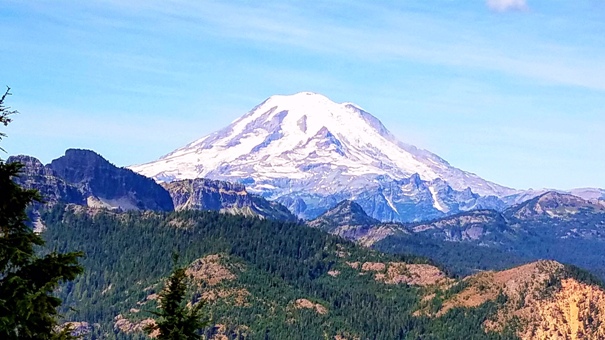
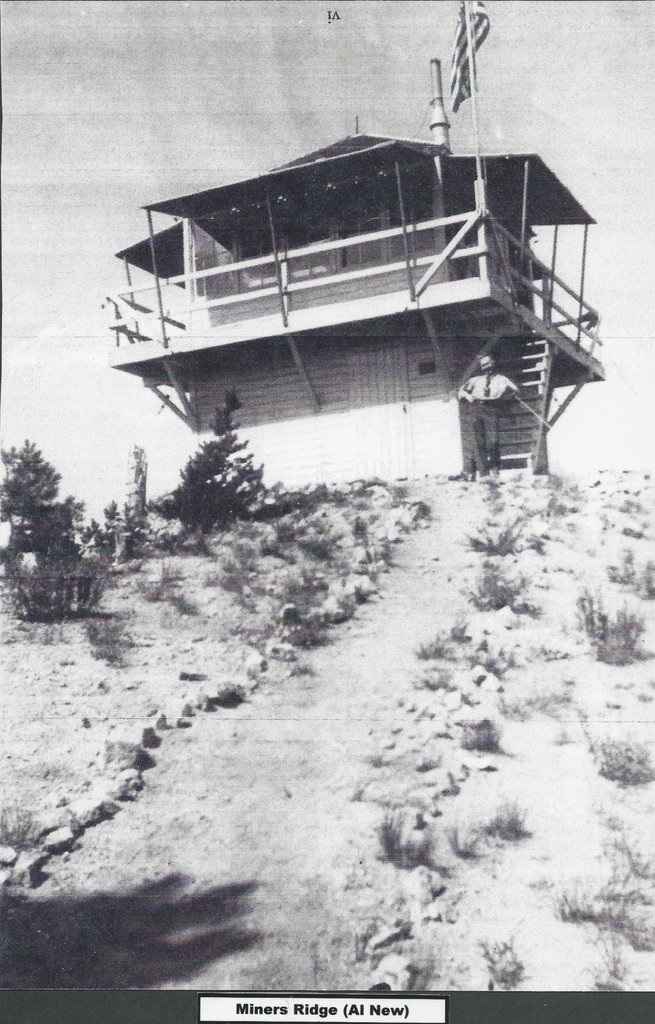

Located on the boundary with the William O. Douglas Wilderness, this lookout site has maintained its road all the way to the summit, although it is rough and rocky the entire way. The summit is known for some outstanding views of Bumping Lake and the surrounding peaks and there is a trailhead at the top for Root Lake. Along the way, near the summit is Granite Lake Campground. This difficult to reach location is vacant in the off season and crowded in mid-summer. The summit road can hold snow until mid-summer.
Elevation: 6,072 feet or 6,049 feet
Distance: Drive-up or walk road
Access: High Clearance Needed, 4WD best
Washington Fire Lookouts
History
The lookout inventory says this was a 2-story L-4 cab built in 1933-1934 and destroyed in 1972. Panoramic images from the roof were taken by George Clisby on July 19, 1934. The foundations of a garage are in the parking area just below the summit. Allen New was a lookout in the late 1930's, Dave Wright in 1938, and Betty Gallant in 1943 (who started out at Ravens Roost but was transferred mid-summer). Douglas Jones, the 1942 lookout, gave his life in the Battle of the Bulge the following year.
From: A Three-Generational Women's Lookout Team by Joan Burton
Pamela Olmsted Bobroff remembers serving with her mother and grandmother as part of a three-generational lookout team during World War II as “the best time in my life.” Paralyzed with MS today, she says with a smile, “The majesty of the wilderness will always be with me.” Somehow Olmsted, a foreign language teacher at Seattle’s Garfield High School, persuaded the Snoqualmie National Forest Service ranger to take a chance on her other capacities anyway. For the salary of $120 a month the Service got the combination of 65-year old Grandma, cook and woodchopper; Virginia, fire finder and plane spotter; and teenaged Pamela, water carrier, and flag raiser. They were the only three-woman team in Region Six, encompassing Washington and Oregon.
In the summer of 1944 the trio reported for duty to Miner’s Ridge in the Naches Ranger District above Bumping Lake. Virginia turned in temperature, humidity and plane reports and phoned in checks of the surrounding forest every half hour. Pam at 14 could spell her mother for some of these responsibilities. Her new squirrel pet was called Mrs. Stuffy.
The women provided all their own food and prepared their own meals, but Mrs. Bautelle’s cooking was so good she attracted inspection visits from rangers at mealtimes. They had very little fresh food, so they relied on canned and bagged basic foods. Since there was road access, tourists would occasionally bring in fresh fruit, but Pam remembers that the lookouts closed before the blueberries ripened. They served the prior year on Suntop Lookout and the following year on Goat Peak (American Ridge).
Access
Drive the Bumping Lake Road from Highway 410. From end of pavement, go just over 2.5 miles to a major Y intersection signed Deep Creek. Take a right and go around a half mile to another Y. Now go left uphill on a deteriorated road that is quite rocky (Granite Lake, Road #2009). Vehicles without high clearance will only get so far before issues. Follow this last road 3.5 miles to the Granite Lake Campground, then another 2ish miles to the summit. The final 2 miles are better then the 3 before it. The rockiest part of road is just before Granite Lake.
Miners Ridge Lookout Site (Naches District)
Area History
Miner's Ridge is a well named point. Tom Fife, one of the most famous local miners who
homesteaded Goose Prairie, found interesting mineral deposits on Miner's Ridge and staked claims there by 1890. Fueled by rumors of a possible railroad route through this area in 1892, miners scoured the surrounding ridges and streams for signs of mineral wealth. Eventually, Ruben Root, Cap Simmons, John McAllister, and others all staked additional claims. The old Clara Mine, Blue Bird, Deep Creek, Keystone and Iron Door were just a few of these mineral claims. Once Copper City had been established as the primary point for processing ore, it became one of the most famous spots in the area
As you head down, stop at the second switchback you come to. This will be a
sweeping turn to the left. From this point you will find a faint hiking trail around the hillside south to the Clara Mines. Old dilapidated cabins still remain for your curiosity. Near here, Tommy Amato, the Japanese camp cook, was killed when the kitchen woodpile collapsed on him as he was collecting wood for the evening meal. Tommy's body was packed from the Clara to American River for his return home to Japan by Ira Ford. Tom Fife was from Scotland, Hindoo John from India, and Ruben Root from Minnesota.
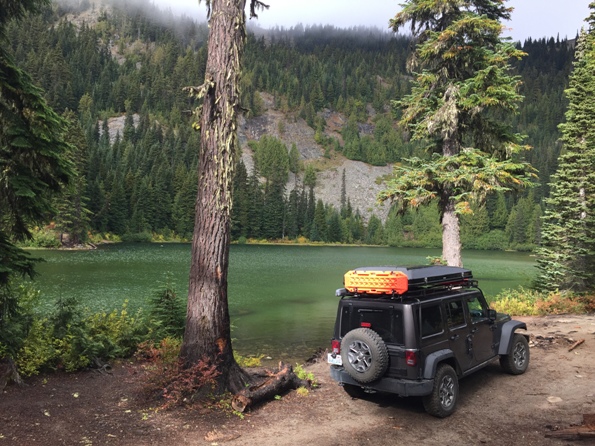
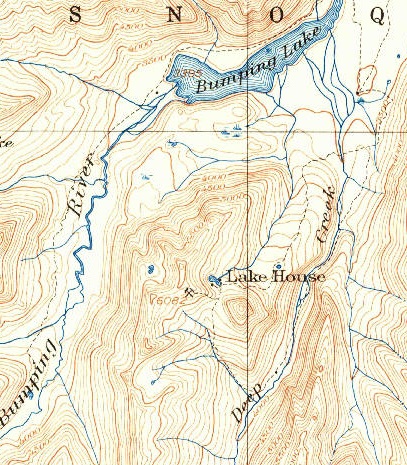
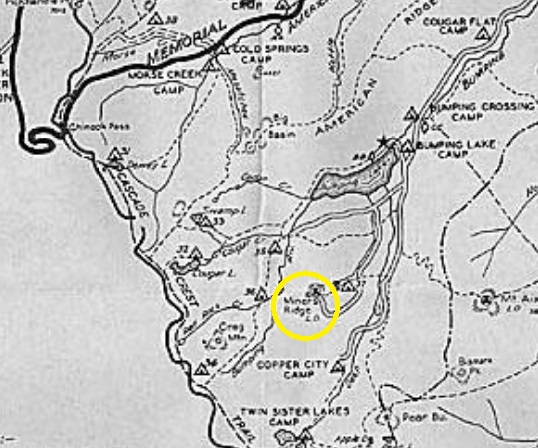
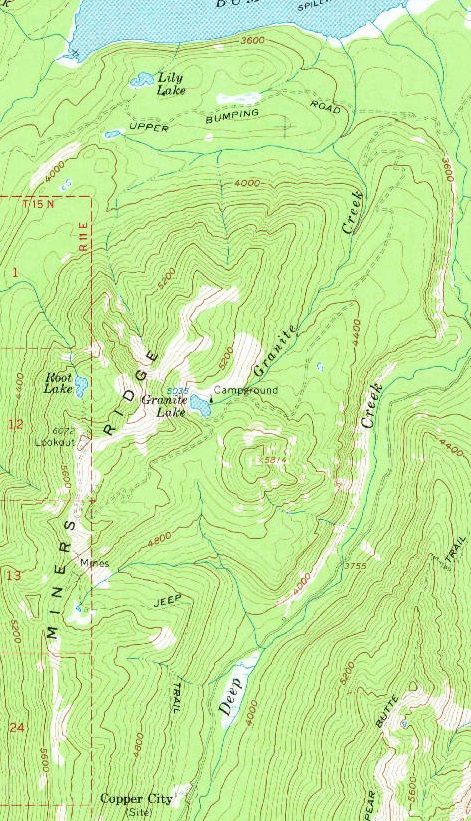
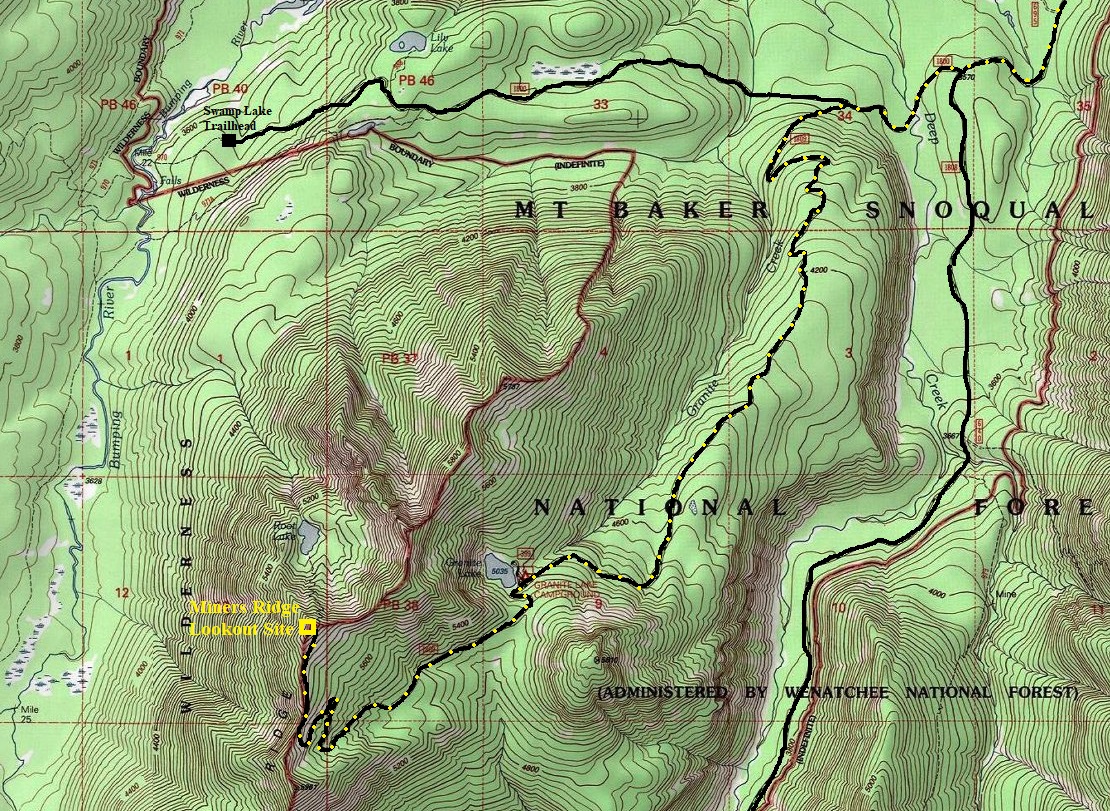
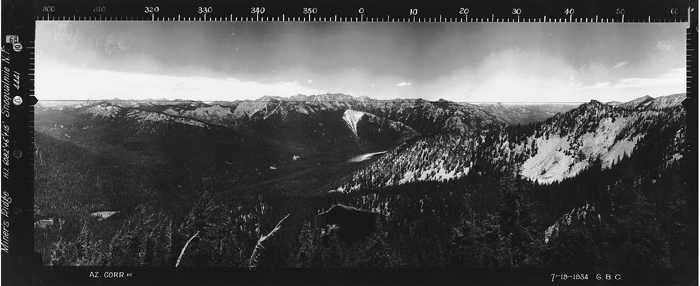
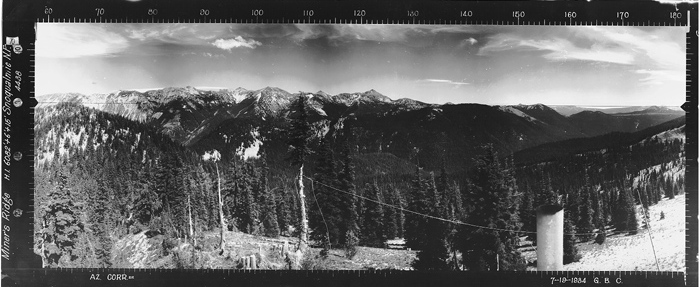
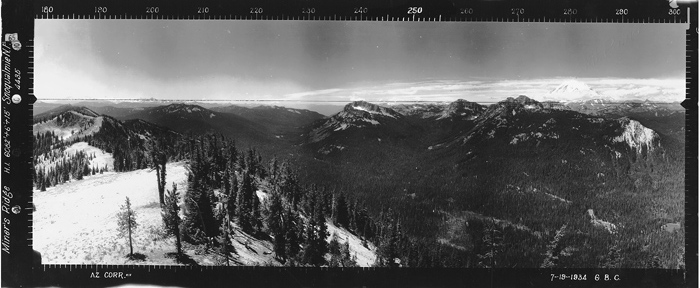
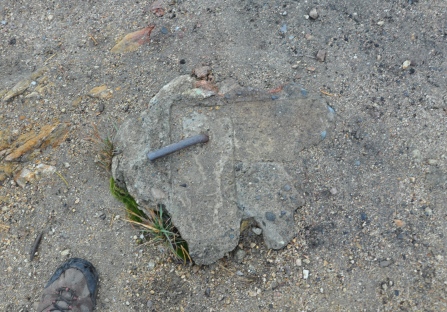
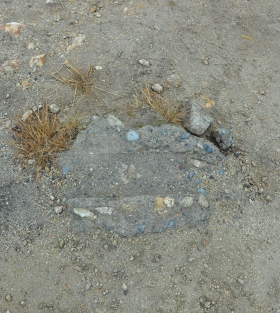
Looking North July 19, 1934
Looking Southeast July 19, 1934
Looking Southwest July 19, 1934
1937 Recreation Map (same road with Granite Lake Campground just below the lookout.
1902 map showing trails to the mines and Lake House (Granite Lake)
Granite Lake Campground
The last 100 feet to the summit from the garage area
Location of the garage with some of the footings still there
Summit view
Looking west
1962 map (1980 edition) showing the lookout
A few foundation parts still remaining on the summit in 2018
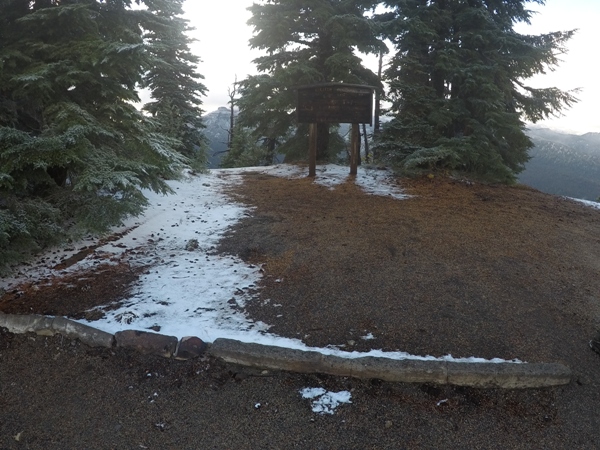
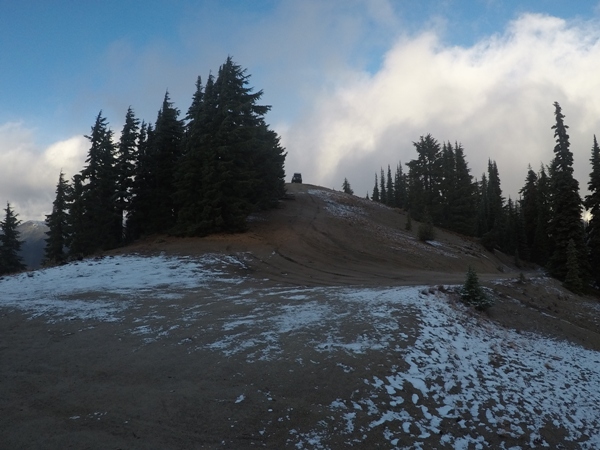
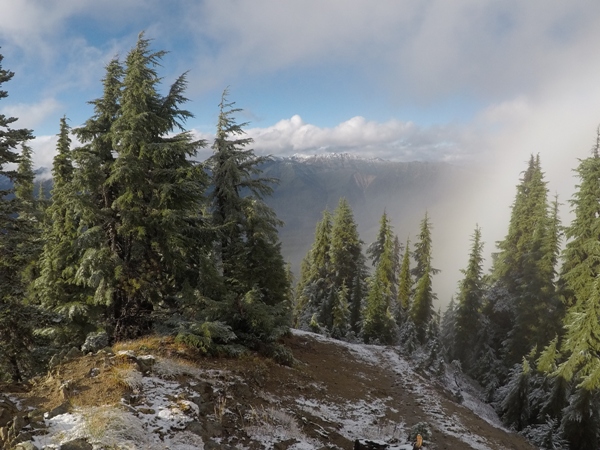
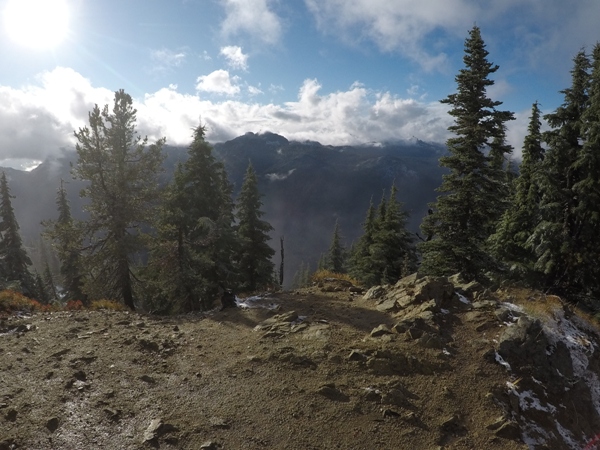
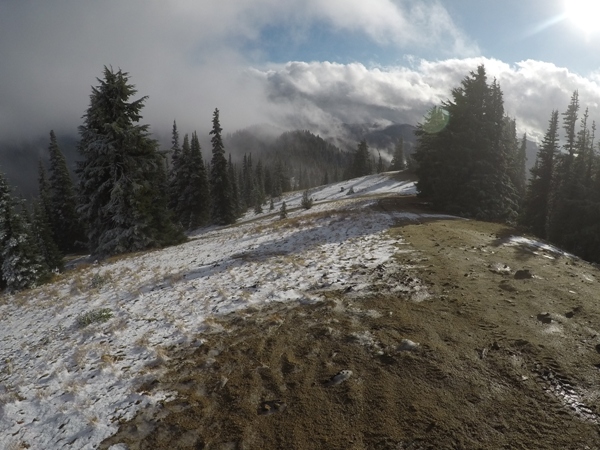
Summit view to the south
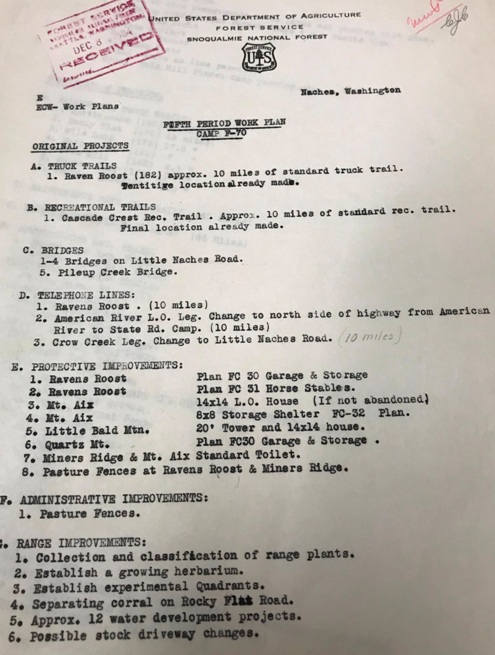
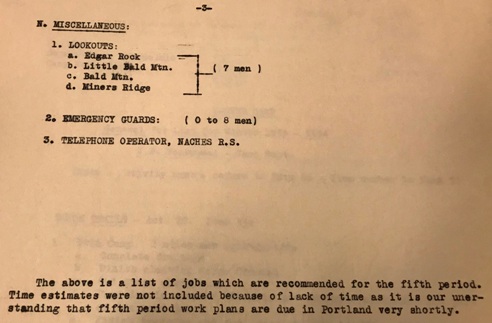
View of Mt. Rainier on a clear day
A short hike from the lookout area is the Miners Ridge Highpoint where the views are even better.



















